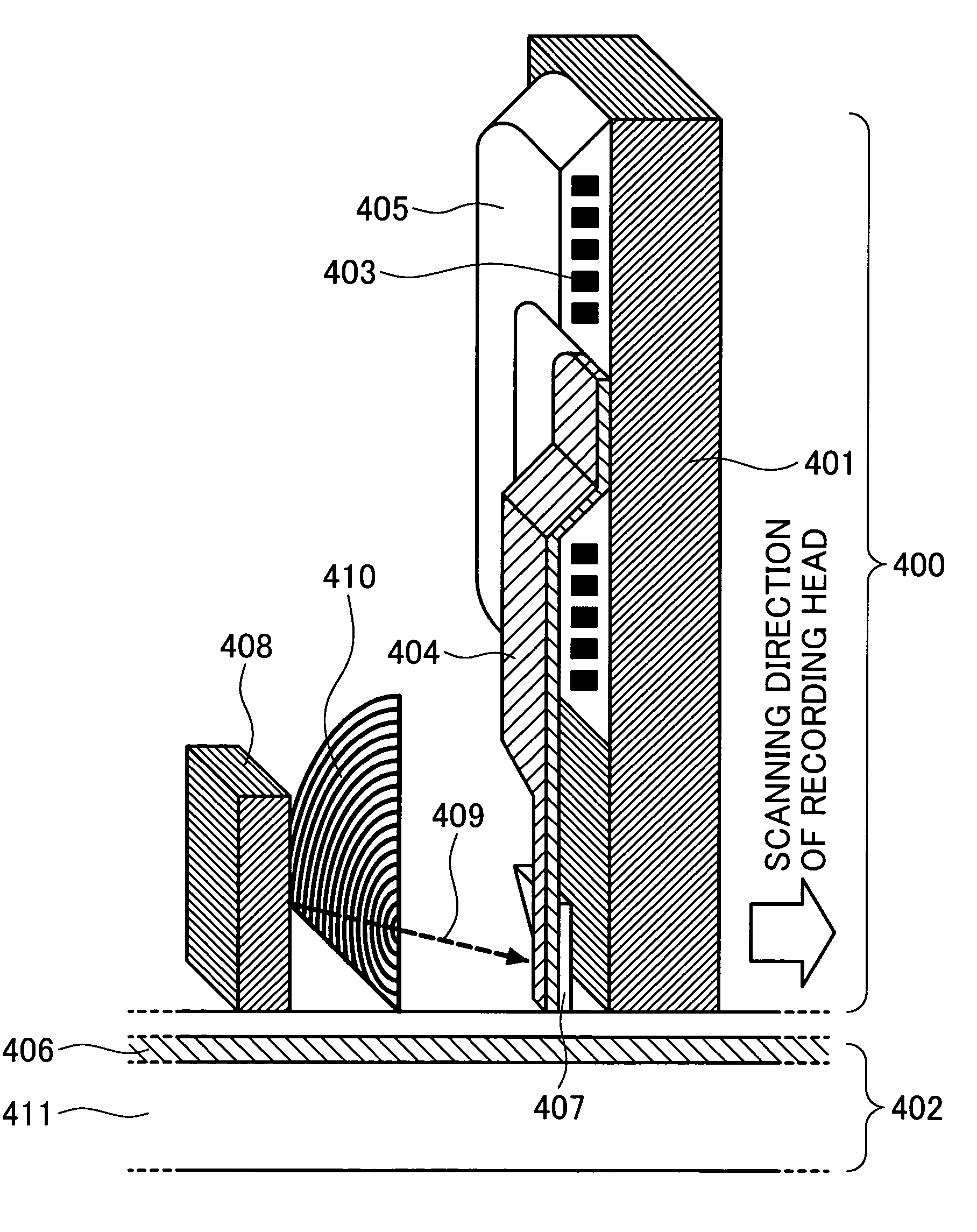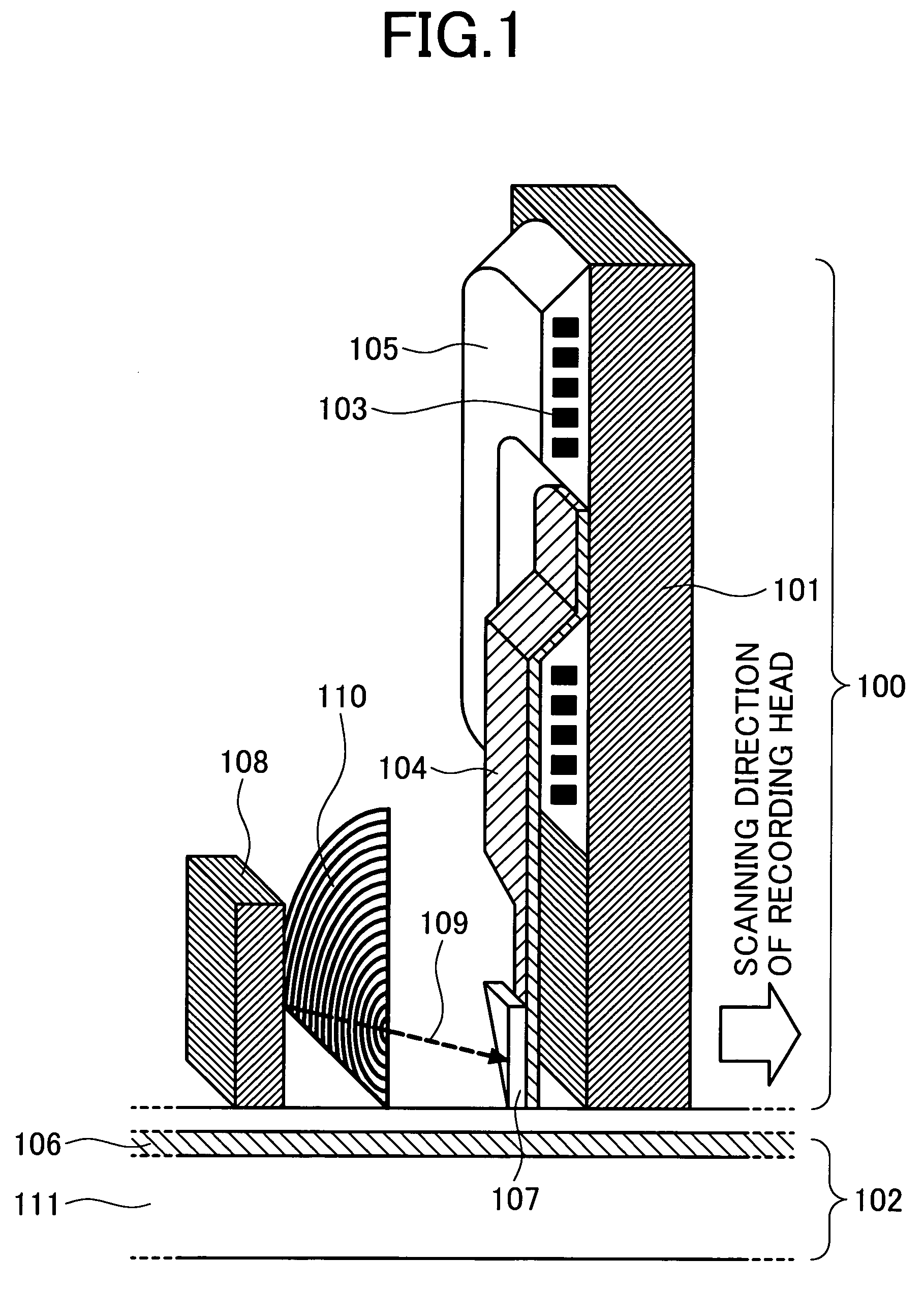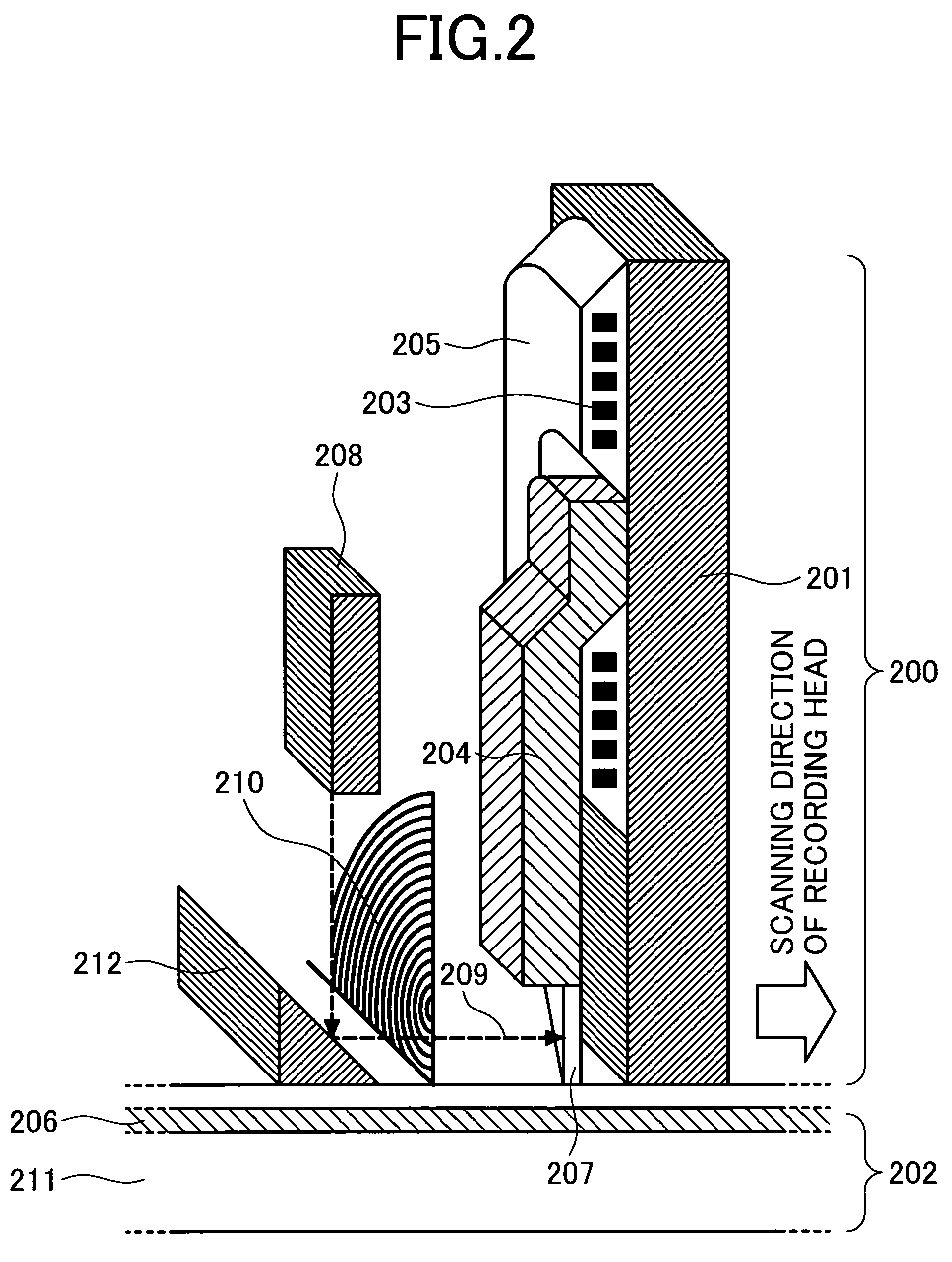Recording head and information recording apparatus
a recording head and information technology, applied in the field of recording head and information recording apparatus, can solve the problems of reducing the wavelength of light source, the efficiency of emission and numerical aperture cannot be theoretically made larger than 1, and the difficulty of increasing recording density, so as to increase the manufacturing precision of the diffuser, reduce the transition width of magnetization in the magnetic recording layer, and increase the manufacturing precision
- Summary
- Abstract
- Description
- Claims
- Application Information
AI Technical Summary
Benefits of technology
Problems solved by technology
Method used
Image
Examples
Embodiment Construction
[0021]Referring to the drawings, concrete embodiments of the invention will be described in detail below.
[0022]FIG. 1 shows a first example showing the configuration of a recording head according to the invention and shows the sectional structure of the circumference of a recording mechanism in case the recording head and a recording medium are cut along their faces perpendicular to a surface of the recording medium (in a vertical direction in FIG. 1) and parallel to a scanning direction (a direction of a track which is a lateral direction in FIG. 1). The method of depiction is common in embodiments shown in FIGS. 1 to 4. In the recording head 100, a flat auxiliary magnetic pole 101 is formed so that it is substantially perpendicular to the recording medium 102 and is substantially orthogonal to the scanning direction. Further, a conductive pattern 103 made of copper is spirally formed over the auxiliary magnetic pole 101. An insulator such as aluminum oxide is filled between the co...
PUM
| Property | Measurement | Unit |
|---|---|---|
| surface roughness | aaaaa | aaaaa |
| diameter | aaaaa | aaaaa |
| refractive index | aaaaa | aaaaa |
Abstract
Description
Claims
Application Information
 Login to View More
Login to View More - R&D
- Intellectual Property
- Life Sciences
- Materials
- Tech Scout
- Unparalleled Data Quality
- Higher Quality Content
- 60% Fewer Hallucinations
Browse by: Latest US Patents, China's latest patents, Technical Efficacy Thesaurus, Application Domain, Technology Topic, Popular Technical Reports.
© 2025 PatSnap. All rights reserved.Legal|Privacy policy|Modern Slavery Act Transparency Statement|Sitemap|About US| Contact US: help@patsnap.com



